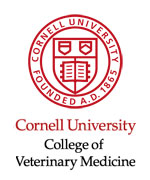Recent outbreaks of West Nile Virus,
Ebola Hemorrhagic Fever, SARS, Monkeypox, Mad Cow Disease and
Avian Influenza remind us that human and animal health are intimately
connected. A broader understanding of health and disease demands
a unity of approach achievable only through a consilience of
human, domestic animal and wildlife health - One
Health. Phenomena
such as species loss, habitat degradation, pollution, invasive
alien species, and global climate change are fundamentally altering
life on our planet from terrestrial wilderness and ocean depths
to the most densely populated cities. The rise of emerging and
resurging infectious diseases threatens not only humans (and
their food supplies and economies), but also the fauna and flora
comprising the critically needed biodiversity that supports the
living infrastructure of our world. The earnestness and effectiveness
of humankind’s environmental stewardship and our future
health have never been more clearly linked. To win the disease
battles of the 21st Century while ensuring the biological integrity
of the Earth for future generations requires interdisciplinary
and cross-sectoral approaches to disease prevention, surveillance,
monitoring, control and mitigation as well as to environmental
conservation more broadly.
We urge the world’s leaders, civil society, the global
health community and institutions of science to:
1. Recognize the essential link between human, domestic animal
and wildlife health and the threat disease poses to people, their
food supplies and economies, and the biodiversity essential to
maintaining the healthy environments and functioning ecosystems
we all require.
2. Recognize that decisions regarding land and water use have
real implications for health. Alterations in the resilience of
ecosystems and shifts in patterns of disease emergence and spread
manifest themselves when we fail to recognize this relationship.
3. Include wildlife health science as an essential component
of global disease prevention, surveillance, monitoring, control
and mitigation.
4. Recognize that human health programs can greatly contribute
to conservation efforts.
5. Devise adaptive, holistic and forward-looking approaches
to the prevention, surveillance, monitoring, control and mitigation
of emerging and resurging diseases that take the complex interconnections
among species into full account.
6. Seek opportunities to fully integrate biodiversity conservation
perspectives and human needs (including those related to domestic
animal health) when developing solutions to infectious disease
threats.
7. Reduce the demand for and better regulate the international
live wildlife and bushmeat trade not only to protect wildlife
populations but to lessen the risks of disease movement, cross-species
transmission, and the development of novel pathogen-host relationships.
The costs of this worldwide trade in terms of impacts on public
health, agriculture and conservation are enormous, and the global
community must address this trade as the real threat it is to
global socioeconomic security.
8. Restrict the mass culling of free-ranging wildlife species
for disease control to situations where there is a multidisciplinary,
international scientific consensus that a wildlife population
poses an urgent, significant threat to human health, food security,
or wildlife health more broadly.
9. Increase investment in the global human and animal health
infrastructure commensurate with the serious nature of emerging
and resurging disease threats to people, domestic animals and
wildlife. Enhanced capacity for global human and animal health
surveillance and for clear, timely information-sharing (that
takes language barriers into account) can only help improve coordination
of responses among governmental and nongovernmental agencies,
public and animal health institutions, vaccine / pharmaceutical
manufacturers, and other stakeholders.
10. Form collaborative relationships among governments, local
people, and the private and public (i.e.- non-profit) sectors
to meet the challenges of global health and biodiversity conservation.
11. Provide adequate resources and support for global wildlife
health surveillance networks that exchange disease information
with the public health and agricultural animal health communities
as part of early warning systems for the emergence and resurgence
of disease threats.
12. Invest in educating and raising awareness among the world’s
people and in influencing the policy process to increase recognition
that we must better understand the relationships between health
and ecosystem integrity to succeed in improving prospects for
a healthier planet.
It is clear that no one discipline or sector of society has
enough knowledge and resources to prevent the emergence or resurgence
of diseases in today’s globalized world. No one nation
can reverse the patterns of habitat loss and extinction that
can and do undermine the health of people and animals. Only by
breaking down the barriers among agencies, individuals, specialties
and sectors can we unleash the innovation and expertise needed
to meet the many serious challenges to the health of people,
domestic animals, and wildlife and to the integrity of ecosystems.
Solving today’s threats and tomorrow’s problems cannot
be accomplished with yesterday’s approaches. We are in
an era of “One World, One Health” and we must devise
adaptive, forward-looking and multidisciplinary solutions to
the challenges that undoubtedly lie ahead.
Robert A. Cook,* William B. Karesh,* and Steven A. Osofsky*
*Wildlife Conservation Society, Bronx, New York, USA |











